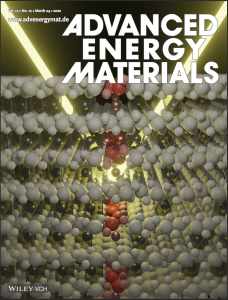
Cornell Chronicle Feature on Disorder Dynamics in Battery Nanoparticles During Phase Transitions Revealed by Operando Single-Particle Diffraction by Jason in Advanced Energy Materials
Abstract:
Structural and ion-ordering phase transitions limit the viability of sodium-ion intercalation materials in grid scale battery storage by reducing their lifetime. However, the combination of phenomena in nanoparticulate electrodes creates complex behavior that is difficult to investigate, especially on the single-nanoparticle scale under operating conditions. In this work, operando single-particle X-ray diffraction (oSP-XRD) is used to observe single-particle rotation, interlayer spacing, and layer misorientation in a functional sodium-ion battery. oSP-XRD is applied to Na2/3Ni1/3Mn2/3O2, an archetypal P2-type sodium-ion-positive electrode material with the notorious P2-O2 phase transition induced by sodium (de)intercalation. It is found that during sodium extraction, the misorientation of crystalline layers inside individual particles increases before the layers suddenly align just prior to the P2-O2 transition. The increase in the long-range order coincides with an additional voltage plateau signifying a phase transition prior to the P2-O2 transition. To explain the layer alignment, a model for the phase evolution is proposed that includes a transition from localized to correlated Jahn–Teller distortions. The model is anticipated to guide further characterization and engineering of sodium-ion intercalation materials with P2-O2 type transitions. oSP-XRD, therefore, opens a powerful avenue for revealing complex phase behavior in heterogeneous nanoparticulate systems.
